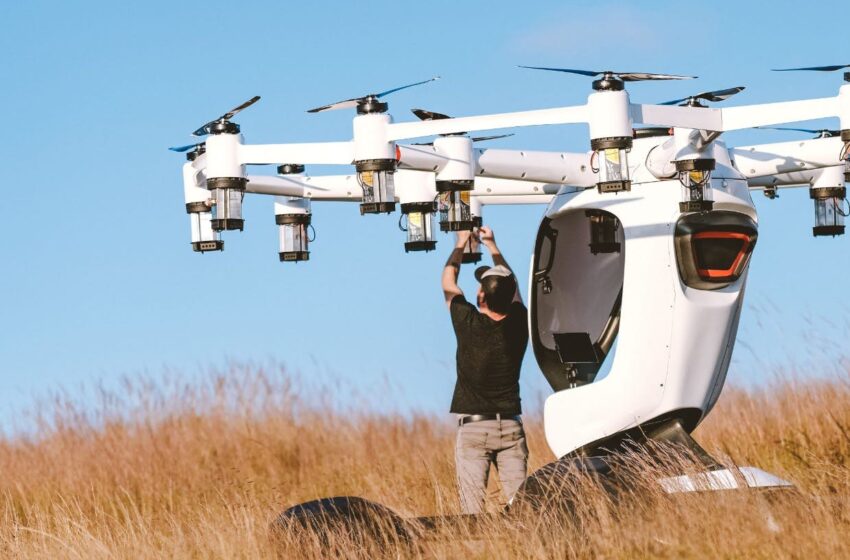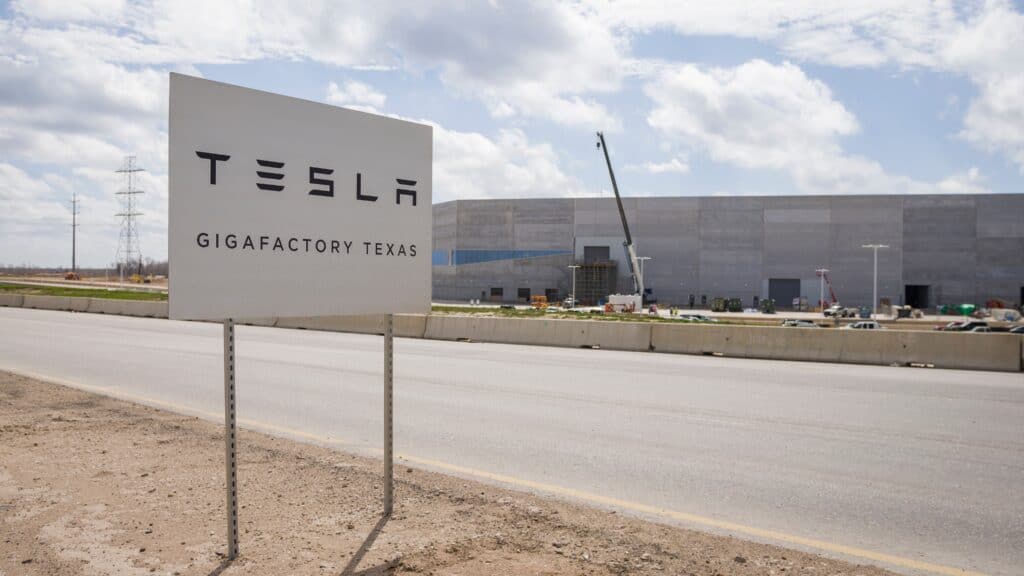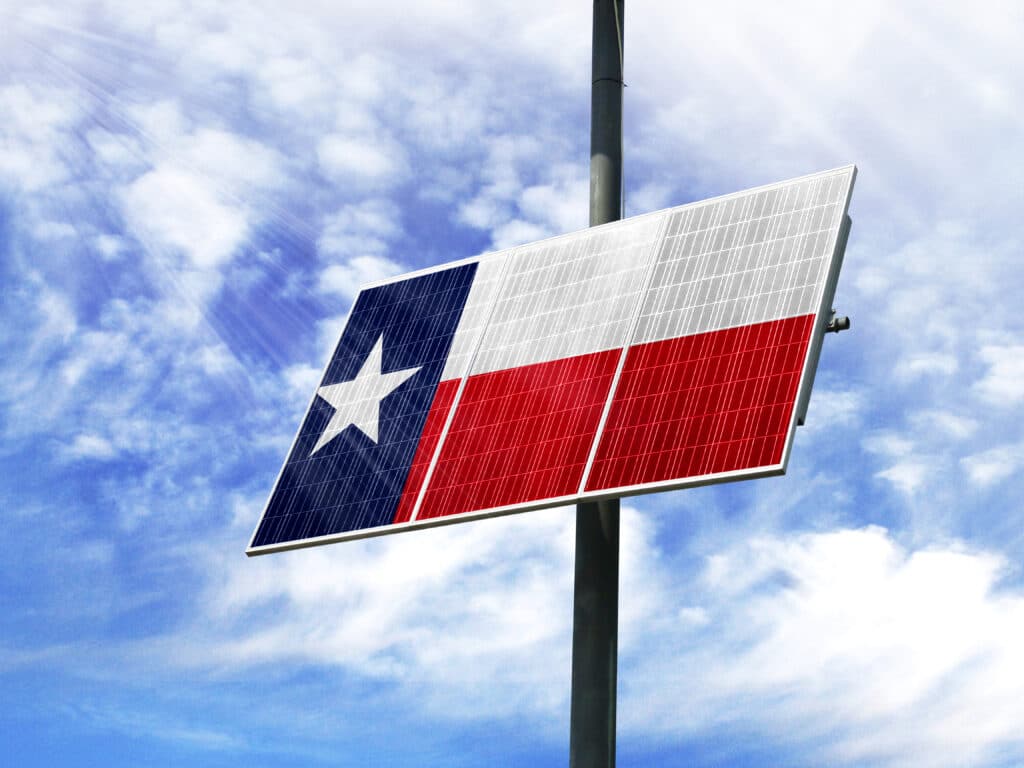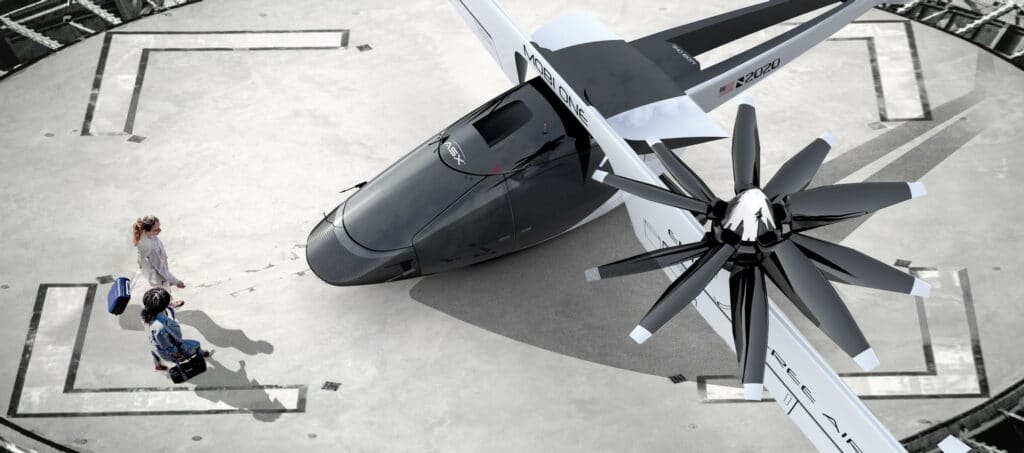A Future Where Anyone Can Fly

A Conversation with Matt Chasen, founder & CEO of LIFT Aircraft
You may have experienced flying a drone, but what about flying in a drone? That’s the experience LIFT Aircraft wants to give you. Founded in Austin by former Boeing engineer and longtime entrepreneur Matt Chasen, LIFT is hard at work on rolling out its HEXA aircraft (seen on this issue’s cover). The HEXA is powered by electric propulsion, capable of vertical takeoff and landing, amphibious, and promises to put the awe and joy of personal flight at every person’s fingertips. Chasen told us about how the technology of flight is developing and what it’s going to be like when we can all defy gravity.

You’re a longtime entrepreneur. How did you get started?
My first entrepreneurial endeavor was uShip. That started with a personal experience I had while I was moving from Seattle down to Austin to attend business school, and it involved a half-empty rental truck. I recognized that there was an opportunity to connect people who had large goods to ship with people who had excess trucking capacity. As I was attending business school at UT, I developed that idea into uShip, which was the first true marketplace that matches shippers and truckers.
And uShip was very successful. You did that for how long?
I founded uShip in 2004 and ran it as CEO until the end of 2016. So about 12 years, and I was working on it for a year before it was founded. It was an amazing experience—super fun, super rewarding.
But now you’ve jumped back into entrepreneurship. How quickly after uShip did you start thinking about LIFT Aircraft?
I actually started my career in aerospace and aviation before uShip, first interning at NASA and then taking my first full-time job at Boeing. In addition to being professionally interested in aerospace, I was personally interested in flying. I got my pilot’s license while I was employed at Boeing and flew quite a bit when I lived out in Seattle. While I was running uShip, I kept an eye on that industry. And I recognized that for the first time in many, many decades, the opportunity for meaningful disruption in traditional aerospace is developing. As in many other industries, it’s centered around new technologies, in this case distributed electric propulsion—electric motors with modern lithium batteries that can make flying much safer and simpler.
We’ve had vertical takeoff and landing aircraft for a very long time—they’re called helicopters. But they’re not simple, safe aircraft that anyone can fly.
It’s interesting—by 2021, we were supposed to have flying cars, or at least The Jetsons told me that. But it looks like flying cars ever made sense.
It’s so true. It’s not what you saw in The Jetsons, but “flying cars” in practice would be vehicles designed to drive legally on roadways and fly. Those are two very different modes of transport. It’s hard to make one vehicle do both. Many companies have tried that and failed over the years. People always come back to the “flying car” idea, but what is possible now—and what I believe people care about—is having a flying vehicle that’s personal in scale. Not just a traditional fixed-wing aircraft but something that can take off and land vertically and is easy to fly. A consumer product anyone can use. For the first time in history, we’re on the cusp of that being possible.
We’ve had vertical takeoff and landing aircraft for a very long time—they’re called helicopters. But they’re not simple, safe aircraft that anyone can fly. They require hundreds and hundreds of hours of training. They’re enormously expensive and they’re loud and have a big footprint. Now we have modern sensors and flight control computers, originally developed for drones that did consumer photography, you can have a different kind of manned piloted aircraft. For the first time, we now have an aircraft that a person with very little training can operate, that can take off and vertically. That’s what’s so powerful.

What type of regulations have you encountered as you develop this technology?
We’re extremely lucky to live in the United States for many reasons, but one is that back in the early eighties, the FAA came out with a unique regulation that defined a category of aircraft called “ultralight.” Aircraft that meet the ultralight classification are not required to be registered with the FAA, and pilot’s licenses are not required to operate these aircraft, as long as they are used primarily for recreational purposes. That’s really a great freedom we have. What we have done at LIFT Aircraft is developed an electric vertical takeoff and landing aircraft that fits into this ultralight classification. The coalescence of new technology, ease of flight, and the regulations we have in the United States have made it possible for people to experience the joy of vertical flight. We think it’s an enormous opportunity to build a business, too.
This reminds me of iFLY, where you recreate the experience of jumping out of an airplane without actually jumping out of the airplane. With LIFT, you get to experience flight without the plane or helicopter.
Humans seem to be wired to be interested in flying. I dreamed of flying growing up. I know many people have the same sort of aspirations. There’s just something about defying gravity and soaring up in the air, gaining a new perspective on the world around you. It’s absolutely thrilling. Many of us take for granted flying in commercial airliners, but climbing into an aircraft you can fly yourself and enjoying the freedom of defying gravity is a feeling that too few people get to experience. We want to make that experience broadly accessible.
The nature of the ultralight classification is that you can only fly in uncontrolled airspace, so you won’t be interfering with commercial airlines. You’re not going to be able to fly our aircraft over downtown Austin, for example. But you will be able to fly over uncongested, scenic areas, typically over big bodies of water or rural areas.
Could I fly it over the Grand Canyon, for example?
That would be possible, though I believe the National Park Service has rules about aircraft in national parks. They’re sensitive to making sure that people’s experience isn’t interrupted by low-flying aircraft. But yes, we think we’ll be able to open locations near national parks so that people can enjoy a new perspective on the scenery.
How soon does this become reality?
We’ve been flying since mid 2018, and we’ve done hundreds and hundreds of test flights. Last year, we even gave a flight demo to the secretary of the US Air Force. Our first test flights were unmanned. One great thing about these aircraft is that their flight-control systems were all developed for unmanned aircraft, so they can be flown remotely and semi-autonomously. For the past couple of years, we’ve done manned flight tests. We’ll be opening our first location in Austin soon and letting our first customers fly. We are also opening locations where people can get training in our virtual reality simulators and learn all sorts of safety procedures before they fly the aircraft, with support from our ground crew as well as our flight-control support. When you’re flying, you’ll have communication with the remote safety pilot, who can take over the aircraft if needed. We feel a huge responsibility to make this experience as safe as possible. We want to be 10 times safer than comparable activities like skydiving, scuba diving, or rock climbing.
I also assume you’re operating under very controlled conditions—you don’t have to fly in bad weather, and you’re working with relatively small geographic areas. It’s more controlled environment than typical flight.
That’s exactly right. That’s how we’re going to achieve a really high level of safety. A lot of general aviation accidents are caused by weather. Our locations will determine weather minimums are for safe flight, so we can help people make the right decisions and fly as safely as possible.

I would assume you have aspirations of eventually moving out of recreational use and becoming part of the commercial transportation business. How far out are we from certified commercial use of these technologies?
There’s a whole bunch of investment happening from companies like Boeing and Airbus, but younger companies like Uber are also exploring this space. In terms of the certification required for aircraft that are larger—four- and five-seat aircraft used for commercial air transportation, like an air taxi—in my view, that’s seven to 10 years away. And I think it’s going to require some significant improvements in battery technology. I’m really excited for those developments to happen. And I do foresee our company developing additional types of aircraft more tailored for other uses.
Eventually, we want it to be so simple for people to fly these aircraft that they won’t ever need to be professionally piloted in an air taxi. Down the road, we want to certify an aircraft that will enable people to fly in controlled airspace, for transportation use specifically. The levels of safety required for that are really, really enormously high. That’s probably three to five years away.
Early on, this technology is going to change people’s lives by opening up new places, allowing people to live and travel within certain geographic areas
Do you think this vertical takeoff, personal aviation technology will remain at the fringe for now, or do you think we are on the verge of a major shift in how it’s used?
Today, a very small segment of wealthy people are able to get around in helicopters. This technology will increase that type of use by several orders of magnitude. I don’t think millions of people a day are going to commute in these, at least not for a very long time. Ground transportation is really, really efficient from an energy standpoint—you’re on wheels that roll. The main problem with ground transportation is congestion of course, but for a lot of people that’s okay. For now, the additional cost of flying is not going to make sense for a lot of people.
Early on, this technology is going to change people’s lives by opening up new places, allowing people to live and travel within certain geographic areas. For example, some areas are currently confined by bridges and ferry systems, as in the Puget Sound area of Washington State for example. Areas that are confined geographically will really open up thanks to these aircraft. I think that’s a huge early market in the near term. That can grow for many, many years before it starts to replace people’s daily commute by car.
My approach to this business is seeing how we can leverage today’s technology and operate under today’s regulations to get this started. It’s going to be a long journey to make small-scale human flight possible for transportation use, but I’m super excited about the prospect. For now, giving people the experience of flying and letting the regulators see how these aircraft develop is the right first step toward making that a reality.





The Missing Link
February 23, 2023